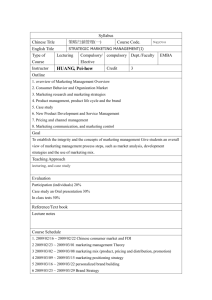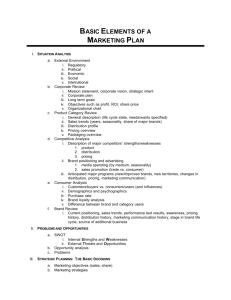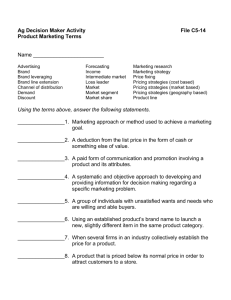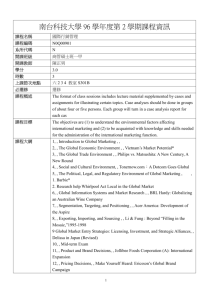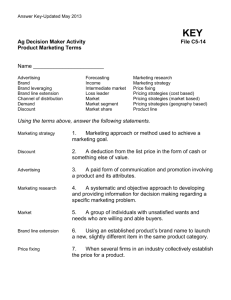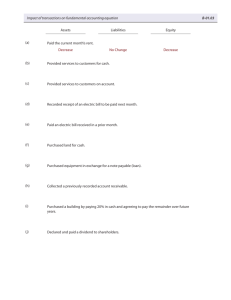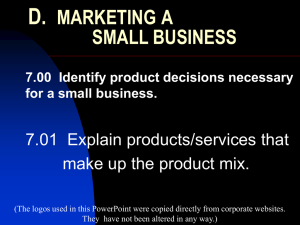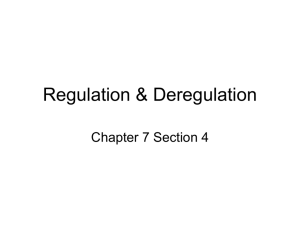Marketing Notes MARKETING
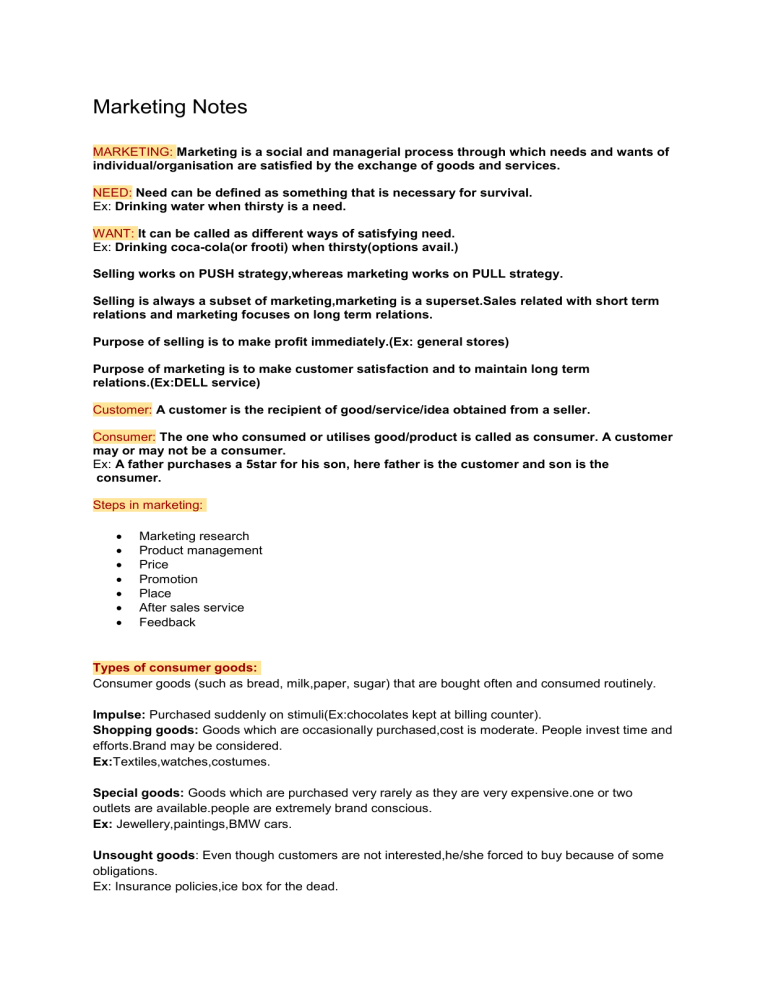
Marketing Notes
MARKETING: Marketing is a social and managerial process through which needs and wants of individual/organisation are satisfied by the exchange of goods and services.
NEED: Need can be defined as something that is necessary for survival.
Ex: Drinking water when thirsty is a need.
WANT: It can be called as different ways of satisfying need.
Ex: Drinking coca-cola(or frooti) when thirsty(options avail.)
Selling works on PUSH strategy,whereas marketing works on PULL strategy.
Selling is always a subset of marketing,marketing is a superset.Sales related with short term relations and marketing focuses on long term relations.
Purpose of selling is to make profit immediately.(Ex: general stores)
Purpose of marketing is to make customer satisfaction and to maintain long term relations.(Ex:DELL service)
Customer: A customer is the recipient of good/service/idea obtained from a seller.
Consumer: The one who consumed or utilises good/product is called as consumer. A customer may or may not be a consumer.
Ex: A father purchases a 5star for his son, here father is the customer and son is the
consumer.
Steps in marketing:
Marketing research
Product management
Price
Promotion
Place
After sales service
Feedback
Types of consumer goods:
Consumer goods (such as bread, milk,paper, sugar) that are bought often and consumed routinely.
Impulse: Purchased suddenly on stimuli(Ex:chocolates kept at billing counter).
Shopping goods: Goods which are occasionally purchased,cost is moderate. People invest time and efforts.Brand may be considered.
Ex: Textiles,watches,costumes.
Special goods: Goods which are purchased very rarely as they are very expensive.one or two outlets are available.people are extremely brand conscious.
Ex: Jewellery,paintings,BMW cars.
Unsought goods : Even though customers are not interested,he/she forced to buy because of some obligations.
Ex: Insurance policies,ice box for the dead.
Niche market: Market which focuses on particular segment and creating distinct image.
Ex: nano car.
Customised product: Customer requirements are taken into account.
Augmented product: Improvement made by the manufacturer voluntarily.
Potential product: Which may introduce in the future depending on technological and economic resources of the firm.
Unique selling proposition(USP): A quality feature design which is available only in one product which is not in other products.
Ex: bajaj pulsar,yamaha fz.
Product mix: All different range of products offered by a company.
Ex: TATA offering salt to airways.
Product width: No. of categories in a product mix.
Ex: hair care,skin care etc.
Product depth: No. of alternatives in each category.
Ex: soap category:lux,cinthol,pears,lifebuoy.
Product line: continuous and consistent availability of the product in the market.
Product life cycle:
It analyses sales and profit of a product through four stages.
STAGE SALES PROFIT
Types of Pricing:
Price is the monetary value given by the customer for the exchange of goods and services.
Follow leader: Adjust the prices according to the dominant player in the market.
Ex: apple (smart phones).
Cost plus: Keeping price just above the cost price to recover the operational expenditure.
Ex: R.K.(ramakrishna) MATH spoken english book for 25/- only
Penetration: Keeping prices low initially when a product is released for the first time.
Ex: sakshi paper for only 2/- with full color pages instead of 3/-
Predatory: keeping the prices low to kill competitors and later increasing it after the competitors left the market.
Ex: Stores like Walmart will effect the kirana stores in the same way.
Skimming: opposite of predatory,keeping prices very high initially when there is no competition and later decreasing it to match the competition.
Ex: Iphone.
Psychological pricing: Offering different ranges of prices to give psychological comfort to the buyer.
Ex: 499,299,599/- customer thinks that it is only in 400's,200's & 500's range.
Deceptive pricing: Promotion tactics disguise customer from knowing the actual price.
Ex: Koti market(Hyderabad) goods,initially,seller will tell the price of a luggage bag as 500/-later on bargaining he will give it to 100/-
Promotion: Purpose is to create awareness about a product in the market.
Advertisements: Paid form of impersonal communications.
Publicity: Ads, hoardings, pamphlets.
Direct selling: DSA approaches buyer personally at their doorsteps to know the consumer behaviour.(very effective but expensive too).
Aggressive marketing: Style of promoting a product which is very forceful or energetic due to increase in the competition.
Co-branding: Promotion of two related products through common brand.
Ex: Nike and Apple brought fitness and music together by developing a wireless music kit along with the shoes.
Place: Product should be made available at a convenient location to the customers.
Length of the channel: no. of intermediaries between actual producer and the final consumer.
Push: Forced to buy the goods by keeping offers like buy 1 get 2.
Pull: Pleasure to buy the goods like android mobiles. Cold call: Persuading or motivating a customer to buy immediately who is in dilemma.
Customisation: Modifying basic products as suitable to the customers.
Standardisation: Offering same product of same quality globally.
Consumer black box: What goes on in the minds of the customer actually at the time of buying a product.
Societal marketing: Marketing for a social cause(CSR-corporate social responsibility)
Ethical marketing: Explaining positives and negatives in a realistic manner about a product for the benefit of the customers.
Purpose of marketing research is to identify need and want of the customer through primary and secondary data.
Primary data is collected through survey,secondary data is collected through official record.
Best approach for exploratory research is observation.
Best approach for casual research is experimental.
Best approach for descriptive research is survey.
Giffen goods: Giffen good is an inferior good with the unique characteristic that an increase in price actually increases the quantity of the good that is demanded. This provides the unusual result of an upward sloping demand curve.This happens because of the interactions of the income and substitution effects. Depending on whether the good is inferior or normal, the income effect can be positive or negative as the price of a good increases.
Blue ocean strategyRequires communication skills,innovation skills and motivation.
Data mining means analysing data stored with back office staff.



